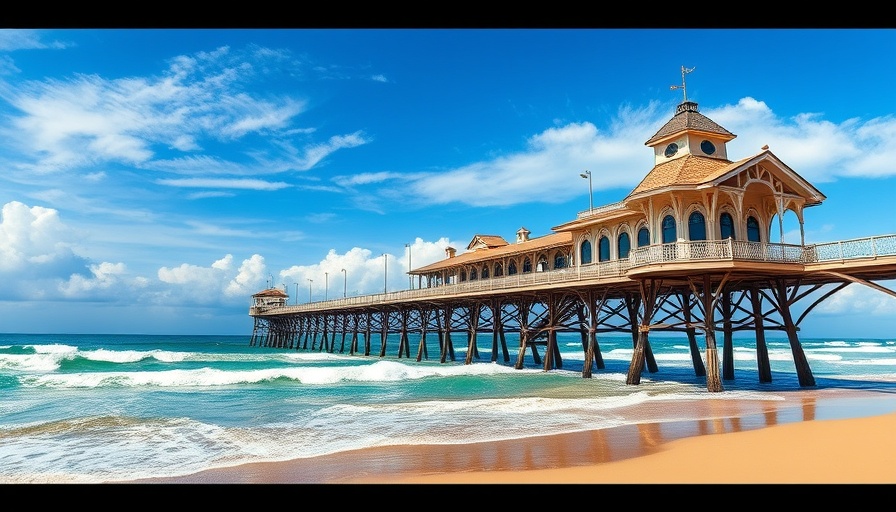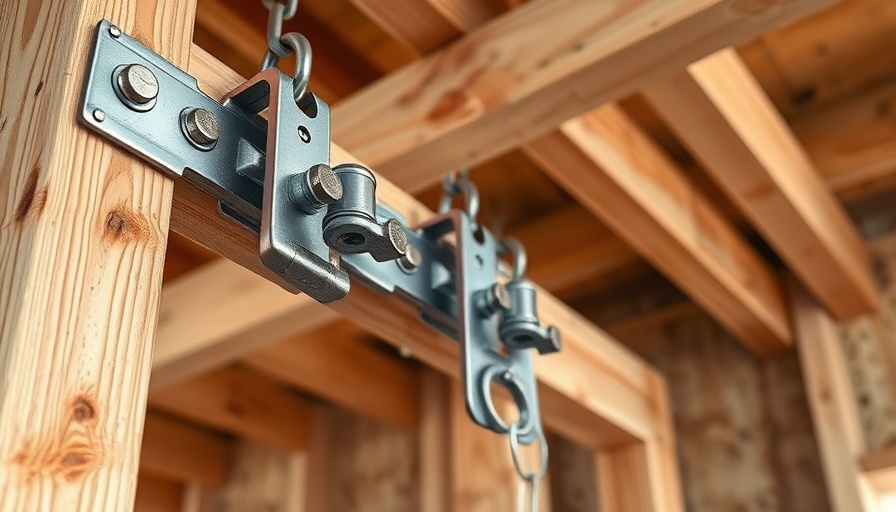
Unlocking Brighton’s Hidden Gem: The Fascinating History of Bungaroosh
If you've ever strolled through Brighton & Hove, the architectural beauty of its Regency and Victorian homes is undeniable. These structures not only showcase intricate facades, balconies, and colorful renders but also conceal a lesser-known yet historically significant building material—bungaroosh. This unique mix, comprising lime mortar, chalk, beach flint, and bricks, was favored by builders two centuries ago for its affordability and accessibility. However, it’s essential to recognize that behind this charm lies a pressing renovation challenge for modern homeowners.
The Pitfalls of Bungaroosh in Renovation
Across the streets of Brighton, many homeowners have faced the lurking hazards of bungaroosh without realizing it. Due to its composition, this material crumbles easily when subjected to vibrations – a drill can weaken an entire wall! Moreover, its ability to draw moisture leads to damp problems that modern cement-based renders can exacerbate, causing structural integrity issues. Misunderstanding bungaroosh's distinct properties can lead renovators down a costly path of repairs.
Identifying Bungaroosh in Your Own Home
Are you uncertain if your home contains bungaroosh? Look for key signs! Homes built or refurbished between 1780 and 1930 are prime candidates. Check for uneven lumps beneath the render, soft lime plaster peppered with stress cracks, or walls that have a thickness of about 220 mm, which is thicker than regular brick. If in doubt, a quick inspection using a moisture meter or a simple probe screwdriver can help confirm its presence.
The Safe-Bricks Approach to Repair
Understanding how to repair bungaroosh safely is crucial. Start with a detailed condition survey to map out voids and test moisture levels, pinpointing load-bearing areas before commencing any work. Unlike modern techniques that utilize cement, the safe bricks approach employs breathable solutions. By using lime-based grouts that consolidate loose materials and installing concealed stainless steel reinforcements where necessary, the integrity of the wall is preserved while ensuring it remains moisture permeable.
Embracing Sustainable Living With Bungaroosh Restoration
This era of home renovation coincides beautifully with the rising trend in sustainable and eco-friendly living. Rather than demolishing historic structures, understanding how to carefully restore them revitalizes community character and conserves resources. For those hopeful to lead this charge, the journey to mastering bungaroosh restoration opens doors to creating homes that blend modern utility with historic charm.
Investing in the Future: The Importance of Awareness
As young, tech-savvy homeowners in London embark on their renovation journeys, awareness of materials like bungaroosh is vital. Not only does it bolster your property investment understanding, but it also empowers you to make thoughtful choices that can save costs in the long run. Knowing what you're dealing with will enable you to engage trusted professionals capable of handling the complexities associated with such unique structures.
In a world where home improvement fads come and go, being part of a community that appreciates the past while innovating for the future is invaluable. By taking the time to educate themselves about materials like bungaroosh, homeowners can preserve the heart of Brighton while enhancing their own living spaces.
Restoring a property shouldn't be a daunting task. With the right knowledge and careful considerations of materials and methodologies, you can ensure your renovations carry both charm and durability. Stay informed and embrace the quirks of your home—after all, every crack and crevice tells a story!
 Add Row
Add Row  Add
Add 






Write A Comment